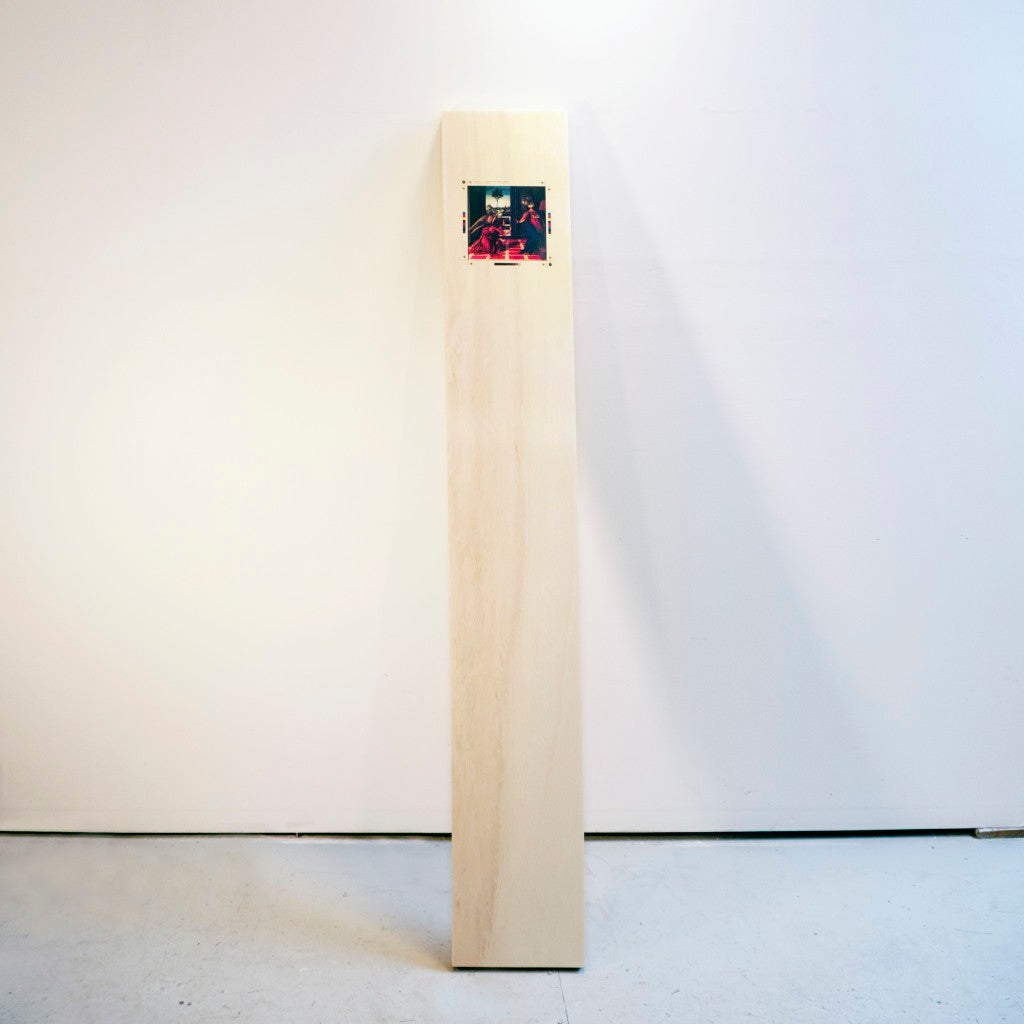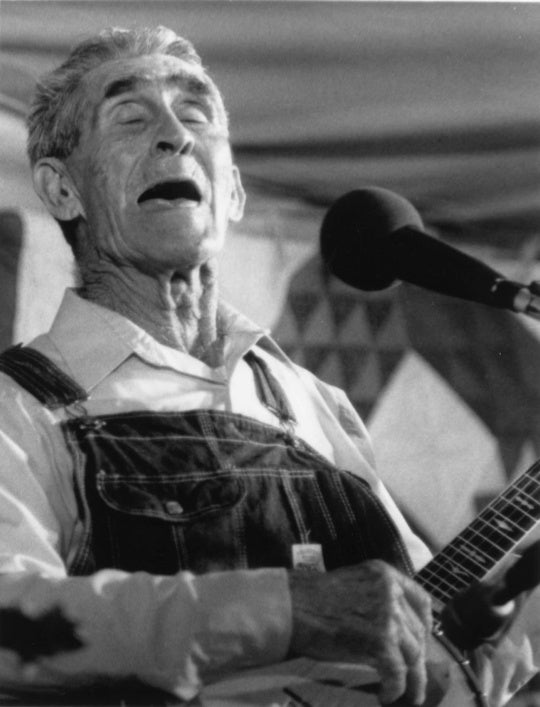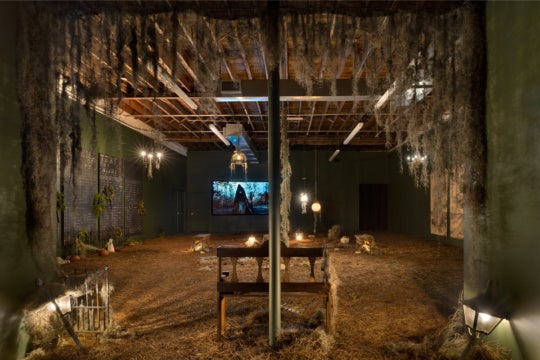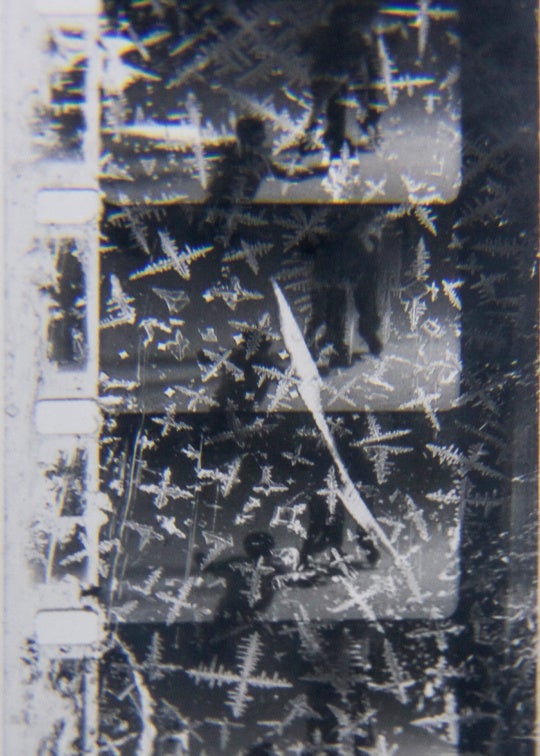
A cast aluminum pumpkin painted with delighted ineptitude to resemble a Pepsi can by Anissa Mack; an Abercrombie & Fitch shopping bag filled with hardened concrete by Chris Aque; a video of the Russian artist Slinko pushing an oversized reproduction of Karl Marx’s beard around a small town. These artists and their work were among the fare offered in Canon Fodder, a show mounted at the Third Street Gallery in Grand Forks, North Dakota, in association with the University of North Dakota’s annual Arts and Culture Conference. The exhibition, curated by Atlanta-based artist Craig Drennen, brought together the work of 13 emerging artists from around the country and offered a refreshing array of objects and video that this region would be hard-pressed to see otherwise.
Cannon fodder, a term possibly originating in the nineteenth century, refers to soldiers who are deployed merely as material to be expended in war: as food for enemy cannon. In a statement accompanying the exhibition Drennen leavened the bleakness of this reference. He wrote, “This exhibition alters the term with convenient wordplay that substitutes ‘canon’ for ‘cannon.’ Instead of artists being raised and trained in the practices of their inherited canon, what if the canonical conventions were food for ambitious artists themselves?” Three of the exhibited artists in particular had all digested the limitations of their respective mediums in fresh and confounding ways.
Ames, Iowa-based artist Mitchell Squire contributed a pair of videos displayed on separate monitors. Both videos were shot from a worm’s-eye view yet at slightly differing angles. Each captured the artist himself, naked, repeatedly swinging an ax down toward the camera and ostensibly at the viewer. As the footage looped, what first came off as wildly aggressive action revealed itself to be more of a routine that conjured a force all its own through its apparent restraint. Squire’s presence became less ominous, more benign. This transition short-circuited the facile signifiers of power exploited in the piece and gave it a wayward sort of depth.
New York-based Chris Carroll showed a plywood plank five feet high and ten inches wide that leaned up against a wall. On the plank’s smooth face was a screen-printed reproduction of Botticelli’s Annunciation, on the underside a bright yellow patch of rough fresco. Self-assured yet undergoing an identity crisis, it was a sculptural object that alluded to the Western tradition of painting from the Renaissance to Warhol.
Los Angeles artist Lily McElroy presented an untitled digital photograph that depicted a body of water at what might have been dusk. Interrupting this tranquil scene from the left edge was an extended arm, its hand grasping a bright light that could have been a flashlight or the sun sitting upon the horizon. The uncertainty of what was actually being caught in the picture induced wonder and suspended the veracity patently afforded traditional photography.
Although it implies stability and provides reassurance, the notion of an artistic canon remains just that, a notion. While appreciating the sheer hybridity of the work exhibited in Canon Fodder, I asked myself: which canon? And whose?
Todd Hebert is Assistant Professor of Art & Design at the University of North Dakota. His work can be found in numerous private and public collections. He is represented by Devin Borden Gallery in Houston, Texas, and Jack Shainman Gallery in New York.




